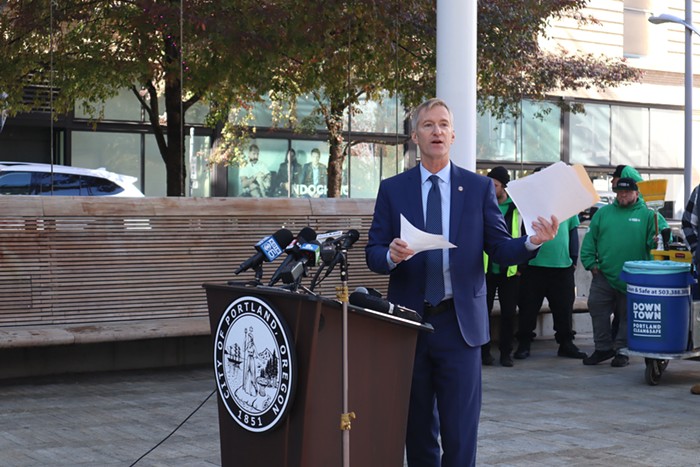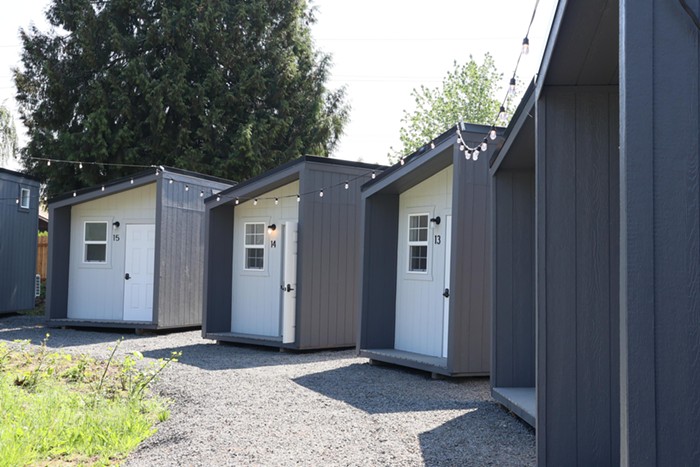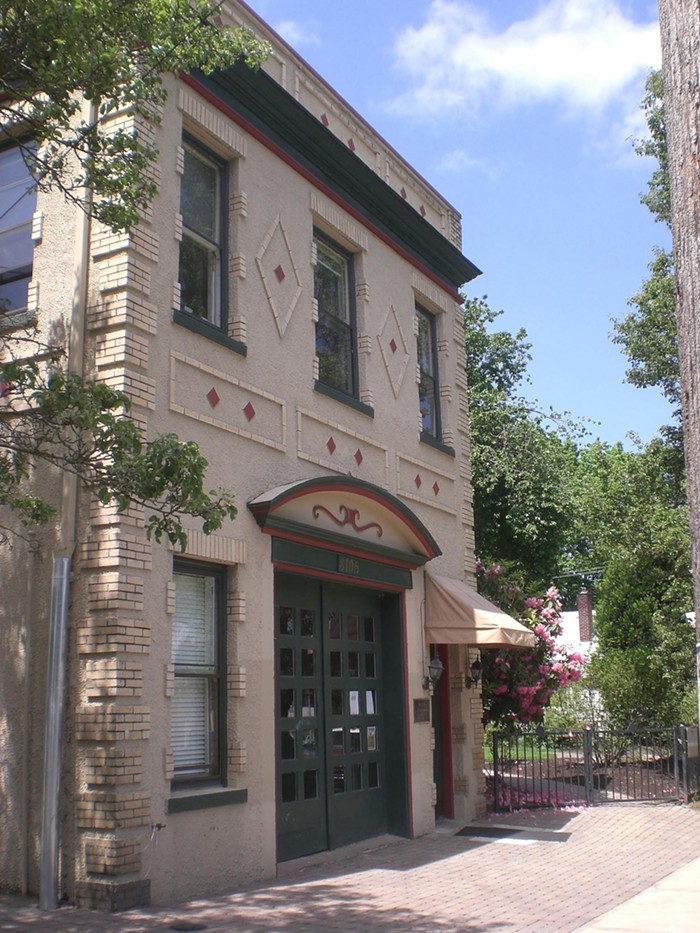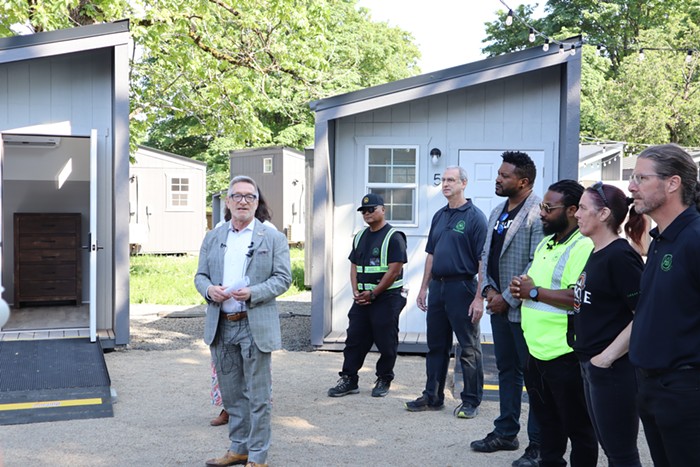FOUR HUNDRED UNITS of affordable housing were supposed to rise from the South Waterfront lot on the corner of SW Moody and Gaines. Instead the property, Block 33, is a muddy gravel parking lot. After 11 years of development and promises, South Waterfront has zero units of affordable housing.
Block 33 is strewn with broken bricks and cigarette butts left by the construction workers who park there before crossing the streetcar tracks to work on the 30-story Mirabella "stylish senior living" tower. The tram glides gracefully overhead.
Not only did the city scrap its plans for 400 affordable housing units on Block 33, but the Portland Development Commission (PDC) voted on February 24 to sell the lot for a loss. PDC hopes to take the cash from the sale and direct it toward another promised affordable housing project in South Waterfront.
The North Macadam Urban Renewal Area housing plan aimed to develop a minimum of 788 units of affordable housing in the new neighborhood south of downtown. Though developers have built 1,900 housing units in South Waterfront, to this date zero of them are the subsidized, affordable units the city promised.
"I can't explain the past 11 years. What I can tell you is that Block 33 would have been prohibitively expensive," says Portland Housing Bureau Director Margaret Van Vliet. She hopes to take the money from the sale of the flopped Block 33 and direct it toward development of 200 affordable housing units at another lot, Block 49—as soon as possible.
"I am very intent on getting some affordable housing in that district," she says.
In 2005, PDC paid an investment group $3 million for "air rights" to develop a 400-unit apartment complex on top of a parking garage that Oregon Health and Science University (OHSU) planned to build on the Block 33 plot of land near the base of the tram. The city also paid OHSU $3 million to reserve parking spots in that planned garage for apartment residents.
But OHSU's garage plan stalled and the cost of building an apartment complex on top of the garage turned out to be $4 million more expensive than PDC originally thought. So PDC has voted to sell its $3 million air rights to OHSU for $1 million, plus the promise that if OHSU sells Block 33 in the next seven years, the city will collect 25 percent of the proceeds (up to $2 million). OHSU will also refund the $3 million check for reserving parking spaces.
The sale of Block 33 did not go unnoticed. The League of Women Voters, which has sat in on North Macadam meetings since the district became an urban renewal area in 1999, penned a harsh letter to the city saying the area was becoming an "enclave for the wealthy."
"I'm worried that 11 years have gone by and there are no plans for affordable housing," says League of Women Voters member Debbie Aiona. "I wonder how big a priority this is for the city."
The simple story about the missing affordable housing is that the city's economic plan for the area was a disaster. PDC prioritized funding projects like condo towers that were supposed to generate tax revenue, and planned to use that new money to construct parks and affordable housing. But the market crashed. Instead of making money for the area, developers of South Waterfront's new glass-and-steel buildings are desperately lowering prices and several big projects have never materialized.
"The end result was fewer resources for affordable housing that's now, due to land and construction cost escalation, more challenging to build," says Dee Walsh, the executive director of low-income housing developer REACH who served on the area's urban renewal advisory committee three years ago. "The strategy backfired, and at the end of the day, there has yet to be an affordable housing unit built."
Condo prices in the South Waterfront and city center have dropped almost 16 percent since October 2008, according to Tom Heinicke, who runs insider real estate site Agent503.com.
PDC Central City Manager Lisa Abuaf says development in South Waterfront has been held up by the difficulty of getting loans in post-crash Portland. "Over the past five years, it's much more difficult to get affordable housing built," says Abuaf. "But at the end of the day, it's our charge to make the market build something it normally would not."



















